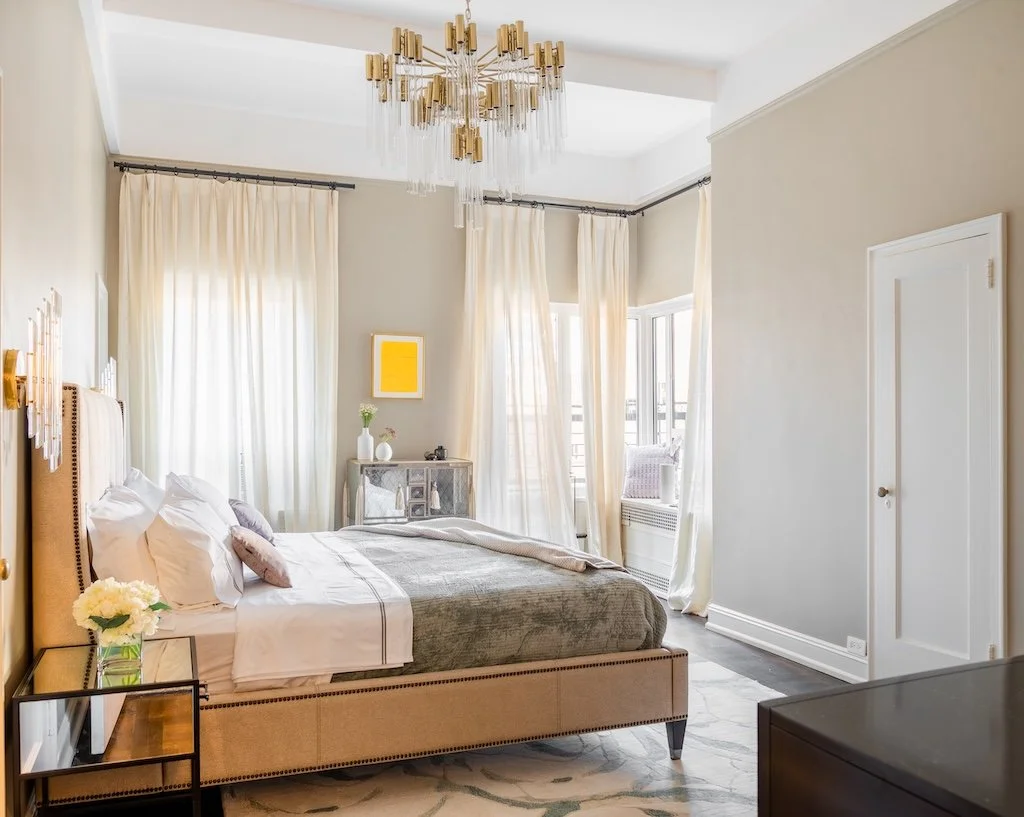The Role of Interior Architecture in Transforming NYC Homes
What Really Makes a New York Home Feel Complete?
Is it the marble countertops? The bespoke light fixtures? The imported tile? Maybe. But none of it works without structure. The real transformation happens before the finishes, at the level of space, light, proportion, and layout. Incorporating thoughtful luxury residential interior design ideas can further enhance the functionality and aesthetic appeal of your space.
Here’s the reality: In NYC, square footage is limited, but potential isn’t. Major renovations involving layout changes typically start at $150–$250 per square foot, with additional costs for design fees, permits, and specialized labor. These complexities often lead homeowners to opt for cosmetic upgrades over structural reconfigurations, potentially compromising the functionality and flow of the space.
Interior architecture is where design meets intention. It’s how unlivable layouts become intuitive. It’s how prewar charm meets modern convenience. And it’s how NYC homes finally start to feel… right.
Interior Architecture: More Than Layouts & Drawings
Interior architecture is the invisible structure behind livable spaces. It blends spatial planning, structural know-how, and design logic without touching the external building envelope.
These firms plan:
Walls that move or disappear
Openings that share light across rooms
Built-in features that replace clutter
Vertical flow for multistory homes
In a dense city like New York, it's not a luxury, it's survival. Discover how Sara Mosele Interiors blends European elegance with New York sophistication in our Interior Design Services.
1. Rewriting the Floor Plan for Real Life
Floor plans in older NYC buildings were designed for another era. Today’s homeowners need flexibility, not formality. An interior architect begins with how you live now (and how that might shift in 3 to 10 years).
They might open kitchens to create visual flow, combine two small bedrooms into a primary suite or introduce transitional spaces like mudrooms or reading zones. It starts with how the space functions and grows from there.
2. Uncovering & Correcting Hidden Flaws
Some flaws are obvious: low ceilings, dark hallways, awkward corners. Others are subtle, doors that clash when open, HVAC vents that steal headroom, outlets in all the wrong places.
Interior architects are trained to see problems before they become expensive.
They adjust:
Ceiling heights to define zones
Door swings for smoother circulation
Electrical layouts for better furniture placement
Storage within walls, not on them
It’s not glamorous but it makes every other design decision easier.
3. Navigating Building Codes & NYC Logistics
New York building regulations are famously complex. Historic restrictions. Load-bearing constraints. Landmark approvals. Co-op boards.
Interior architecture firms manage:
DOB filings and construction drawings
Coordination with structural engineers
Detailed section plans for approvals
On-site reviews during build-out
This isn’t paperwork. It’s what prevents mid-project redesigns, missed permits, and stop-work orders. In NYC, code isn’t background noise it’s the blueprint.
Understanding the nuances of an interior design consultation in NYC can help homeowners navigate these challenges effectively. For a comprehensive understanding of NYC building regulations, refer to the NYC Department of Buildings.
4. Designing the Flow - Vertically & Horizontally
Flow isn’t just about moving from room to room. It’s how space feels, how light travels, how ceilings rise, how corners open.
Interior architects guide both horizontal and vertical rhythm. They do so by widening staircases to let light reach lower floors, aligning doorways to open sight lines, using built-ins to replace bulky furniture or by adding internal windows between living spaces. The result? A home that unfolds, rather than forces.
5. Planning Around Light, Not Just Walls
In NYC, windows are sacred. Light is limited. Walls often compete with it. Great architectural planning begins with light.
Strategies include:
Mirrored walls to reflect natural light
Transom windows above doors
Light wells and vertical shafts in townhouses
Materials that diffuse sunlight instead of absorbing it
A well-lit home feels larger, even if its footprint never changes. Embracing interior design trends for homes can offer inspiration for blending classic elements with contemporary living.
6. Integrating Architecture With Everyday Use
Design isn't complete until it fits your habits. Interior architecture firms spend time asking: How do you start your day? What do you need near the front door? How often do you entertain?
Then they build around it.
Smart interventions:
Custom banquettes that double as storage
Alcoves with outlets for charging stations
Sliding walls that separate or combine rooms
Drop zones that replace bulky entry furniture
These aren’t extras. They’re how design serves daily living.
7. Preserving History While Adding Utility
Many NYC residences come with a past. Ornate moldings. Arched doorways. Parquet floors. Interior architecture respects these features while making them work for today.
This can look like:
Retrofitting old fireplaces with modern finishes
Integrating hidden storage into traditional built-ins
Preserving crown molding while adjusting ceiling planes
Updating staircases while keeping original spindles
It’s not about wiping out character, it’s about reinterpreting it. See how we honor historical elements while introducing modern functionality in our Murray Hill Residence project.
8. Rethinking What a Room Should Be
Interior architects don't just label rooms: kitchen, bedroom, bath. They ask what you need the room to be.
A spare bedroom becomes:
A media lounge
A hybrid guest room and office
A meditation retreat
A large hallway becomes:
A reading nook
A gallery wall
A music corner
They question norms and shape spaces around purpose, not tradition.
9. Combining Aesthetics With Logic
Good looks fade fast when the layout fights back. Interior architecture marries aesthetic impact with usability.
Examples include:
Floating shelves placed in proportion to furniture
Columns hidden inside kitchen islands
Bathroom vanities designed around plumbing chase depth
Ceiling drops used to hide HVAC while defining zones
It’s thoughtful design where everything has a reason even if you don’t notice it.
10. Collaborating With Designers, Builders & Homeowners
An interior architect isn't working in isolation. They act as the point of coordination between:
The client’s vision
The designer’s finishes
The contractor’s execution
This triad ensures that:
Walls don’t block pendant lights
Doors don’t open into art
HVAC vents don’t fight furniture layouts
Everyone stays aligned because the structure supports the style.
Interior Architecture Firms in New York: What Sets Them Apart
In New York, everything is tighter, space, rules, budgets, timelines. So it makes sense that interior architecture firms here are more than consultants. They’re translators. Interpreters. Planners. Problem solvers.
What they bring:
Experience with vertical living
Strategies for maximizing underused space
Compliance with DOB and board-level review
Vision that goes beyond today’s trend
They don’t just redraw the plan. They reshape how the home works.
Why Sara Mosele Design?
Ready to transform your NYC home into a space that truly reflects your lifestyle?
At Sara Mosele Interiors, we specialize in reimagining spaces with a blend of European elegance and New York practicality. Explore our Interior Architecture Services to see how we can bring your vision to life.
Before You Choose Paint - Choose a Floor Plan
Design starts with a sketch, not a swatch. Before you commit to finishes or furniture, look at the bones. The most beautiful homes in the city don’t follow a formula, they follow a strategy.
If your space feels disconnected or your renovation plan starts at the surface, hit pause. Ask how the interior architecture supports what you really need.
Then build something that holds your life. Not just your furniture.
Frequently Asked Questions
-
Interior architecture shapes layout + structure. Interior design focuses on finishes, furnishings & styling. Both are essential but structure always comes first.
-
Early, ideally before you finalize your contractor or submit renovation plans. The right firm can save time, money & headaches during approvals and construction.
-
Costs vary by scope, but most firms offer concept packages + full-service planning. Expect higher investment in prewar or landmarked buildings due to regulations.
-
Absolutely. Interior architecture firms in New York specialize in making small spaces feel bigger, through better layouts, smarter storage & improved light flow.
Welcome!
Hi, I’m Sara. I design spaces that speak to the soul - elevated, timeless, and deeply personal. With roots in Italian elegance and a home in New York sophistication, my work blends refined aesthetics with livable luxury. Whether it’s a city condo or a Westchester retreat, I believe every detail should serve a purpose and spark emotion.
Let's Connect
Have a question about design? Want to collaborate on a project? Or just curious about the stories behind our spaces? I’d love to hear from you.








